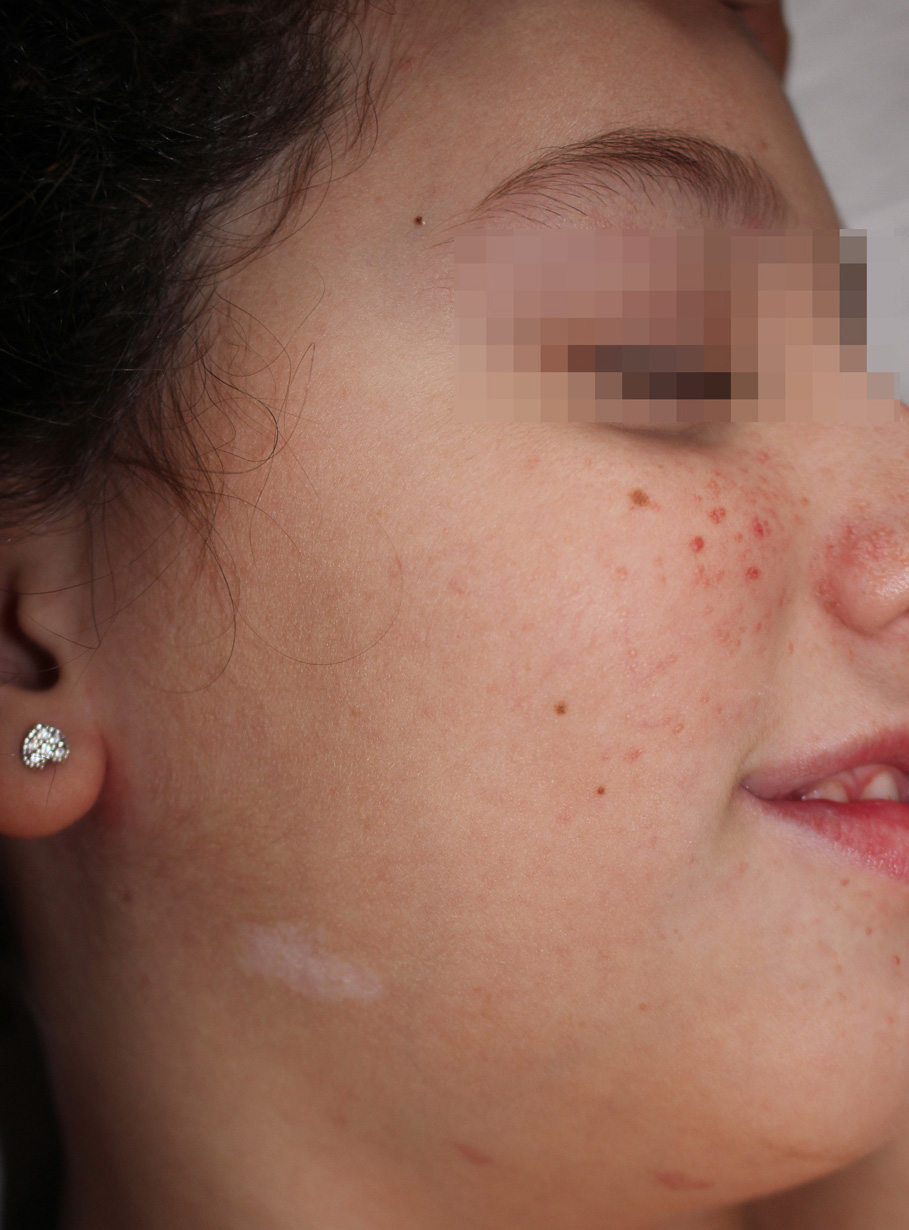Confetti-like hypomelanosis in tuberous sclerosis complex.

Downloads
DOI:
https://doi.org/10.26326/2281-9649.29.1.1946How to Cite
Abstract
The hypomelanotic macules in most cases present at birth are the most precocious sign of tuberous sclerosis complex (TSC). They can be roundish, more often ash-leaf-shaped with a longitudinal diameter clearly prevailing on the trans-versal one, rarely confetti-like-shaped macules with later onset. Recently, the molecular mechanism responsible for reduced melanogenesis has been hypothesized: it has been seen that the white spots contain biallelic mutations of TSC, one congenital and the other acquired. These mutations through the activation of mTOR (Target Of Rapamycin in mammals) are able to induce a cascade of events that end with a reduction of tyrosinase and therefore with an inhibition of melanogenesis. It has also been shown that interventions able to modify the activity of mTOR, for example the topical application of rapamycin, are able to restore the melanogenesis in the hypomelanotic macules.
